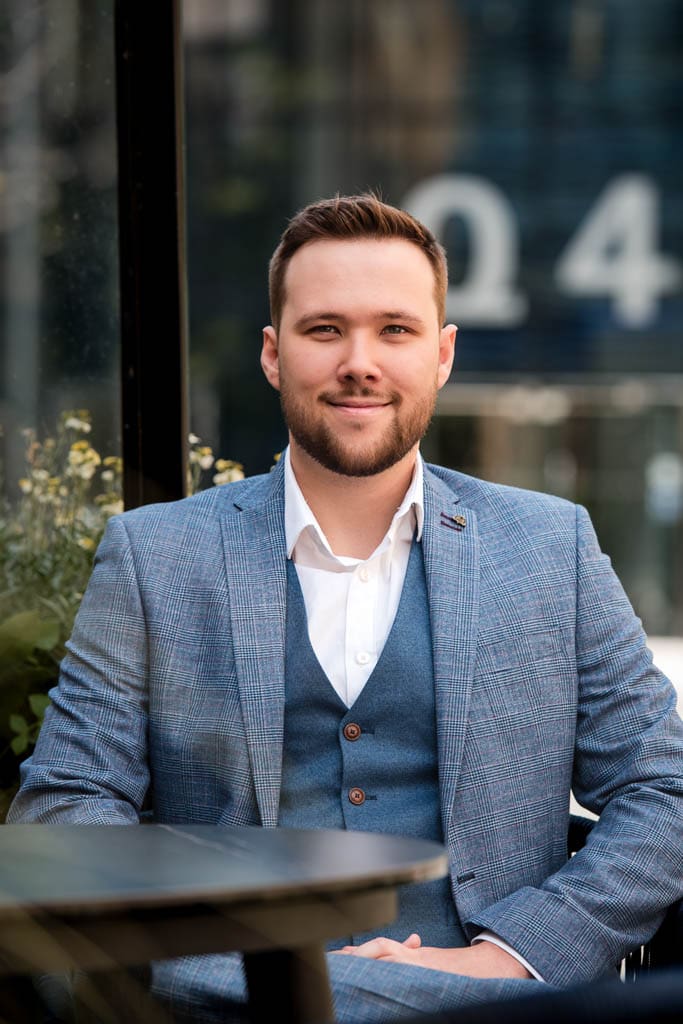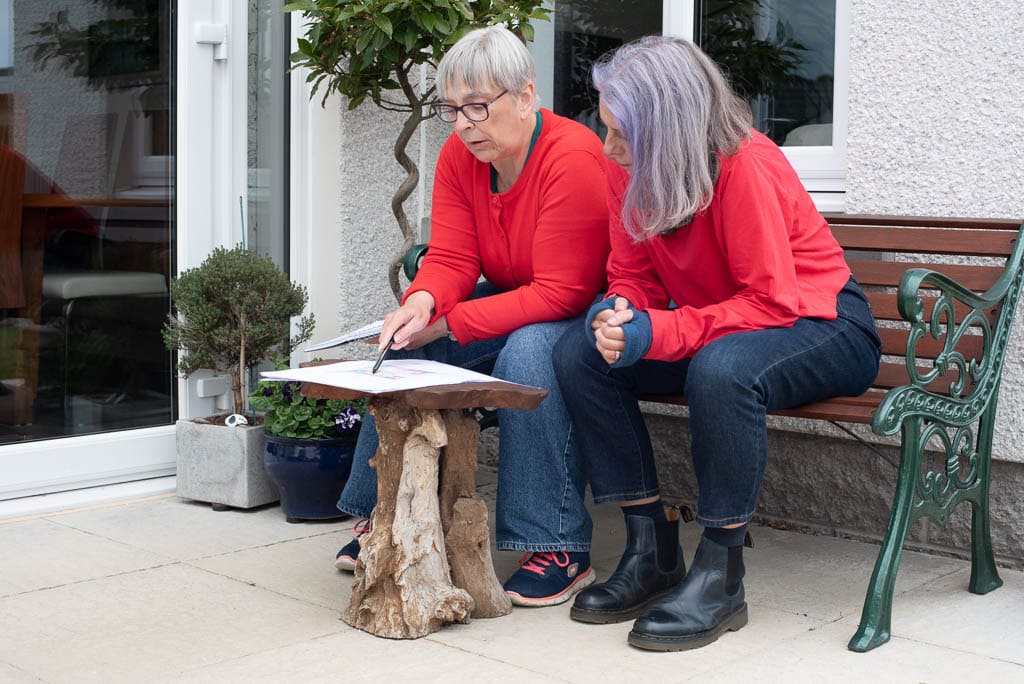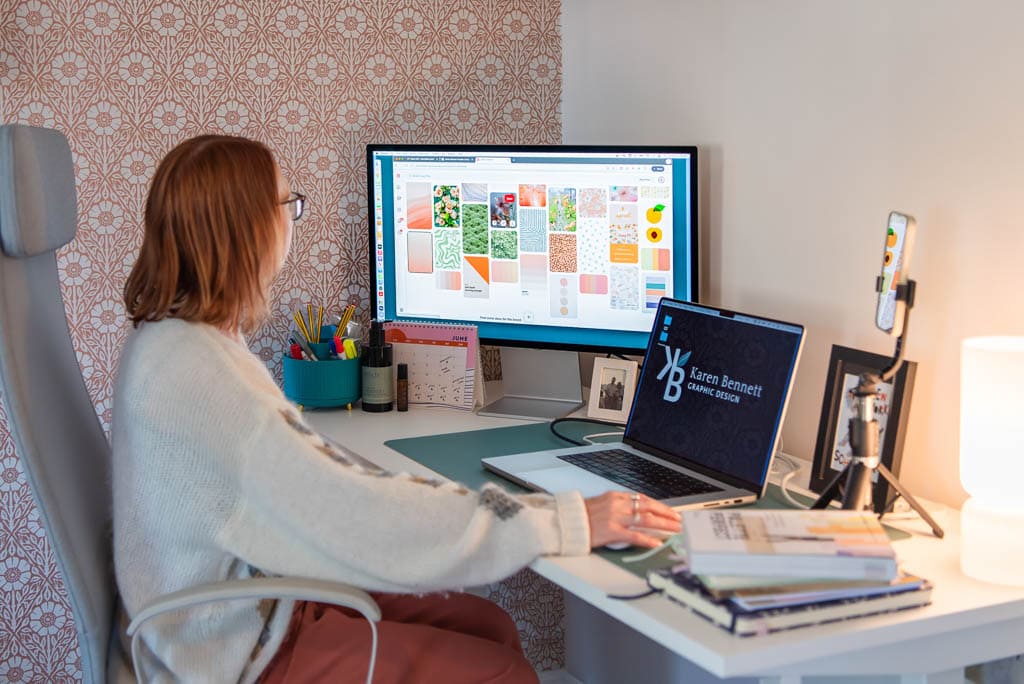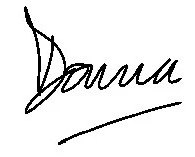The branding mistakes lots of us make - and the advice we’ve all heard (and maybe believed)
Branding mistakes usually starts with a DIY logo. When you're on a Canva binge. Or a desperate Googling of “colour palettes that don’t scream 2016 Etsy shop.”
We’ve all been there. (Please tell me it's not just me??)
You pick a font. Or seven. You fiddle with some colours. You create a Pinterest board so full of blush tones and serif fonts it looks like the inside of a lifestyle influencer’s brain. Your inbox fills with ads for DIY brand kits with names like Wild Honey & Sage or Minimalista Pro. And for a while, it all feels satisfyingly productive. Like ticking off a task that says “Look professional” in capital letters. After a few hours of highly productive procrastination, you look up and say to yourself: “Yes. I have a brand.”
Except... you don’t. You have some nice colours and a vague headache.
It's not your fault, by the way. Just like it wasn't my fault. Most of the branding advice floating around online is about as useful as a motivational quote on a sinking ship. I’m not a brand strategist, but I do spend a lot of time working with clients who have scattered - or no - visuals and no real direction. When I plan a shoot, strategy’s always part of the process.
Everyone’s shouting about aesthetics. Hardly anyone’s talking about strategy. And when they do, it usually involves a deeply confusing Venn diagram or the word “authentic” used no fewer than six times per sentence.
So if you’ve been told your brand is your logo, or your Instagram grid, or that one magical Canva template you use for everything – you’re not doing it wrong.
It’s just that the real work happens somewhere else entirely.
And once you notice that gap, that disconnect between what you’re putting out there and how your business actually feels, it’s impossible to unsee it.
The moment it clicked: branding isn’t what you think it is
Sometimes, all it takes is watching someone speak with absolute conviction about something utterly misguided to realise you’ve been handed the wrong map.
This particular lightbulb moment happened for me years ago during a networking event. A guy stood up to introduce his business and, with great pride, unveiled his new “brand.” There were audible gasps over the colour palette – muted lilacs and pale greys, very on trend at the time – and a tense hush as he revealed his new logo, which looked suspiciously like every other logo in his industry, only with more swirls.

The guy unveiling his new brand? NOT this guy! This is a client of mine and he really knows his stuff.
He spent the next several minutes explaining his font choices in forensic detail, clearly hoping we’d all feel the weight of his strategic genius. There was a brief mention of his actual work, tacked on at the end like a forgotten shopping list item. Something to do with coaching, possibly for humans. I think?
And in that moment, something inside my brain slid into place. Not loudly, more like a quiet internal click, like a well-fitted lid finally settling into place.
Because what he was calling “branding” was really just visual styling. Thoughtful, yes. Pleasing, definitely. But strategy? No.
That’s when when I learned something pretty important: that branding isn’t about how your business looks from a distance. It’s about how it behaves up close.
It’s your reputation, not your rectangle logo with the hand-drawn sun. It’s the reason someone refers you before they’ve even met you. It’s the feeling a client walks away with – relief, confidence, clarity, hopefully! – and the fact they know you’ll deliver that same feeling again and again without without needing six logins and a prayer.
Branding is what people assume about you before you even say a word. It’s stitched into the way you reply to emails, the energy you bring to client calls, the tone of your last LinkedIn caption that sounded suspiciously like you were mid-spiral when you posted it. All of it counts. All of it is branding.
Which is ever so slightly alarming, because it means you have a brand whether you’ve “designed” one or not. The question is whether it’s working for you – or wandering around the internet making awkward small talk with your ideal clients.
Once I started paying attention to this stuff – the tone, the patterns, the energy, figuring what I was saying and to whom – everything else began to fall into place. Not because I downloaded a new template. But because I started treating branding like the strategy it is, not the vibe. And not because I’d done an official brand strategy course (I haven’t), but because I knew I needed to plan photos that actually said something.
Why this matters more than you think
When people get this bit wrong, it doesn’t just cost them in fonts and headshots. It costs them in clarity, confidence, and clients. Here's what else it affects:
It looks good but still feels off
You launch the shiny new website.
You post the carefully curated images.
You even manage to use the same three fonts on your social images for an entire month.
And yet, every time you try to explain what you do, you feel like someone’s swapped your mouth for a beige PowerPoint.
This is the giveaway. If your brand looks polished but feels flat, there’s usually a very good reason - the visuals were built on guesswork and "oooh! Pretty colour!", not strategy. No amount of nice design can fix a foggy message.
People buy clarity, not colour palettes
Your clients are not out there thinking, “What I really need right now is someone with an impeccable type hierarchy.”
They’re trying to solve problems. They want to know whether you understand them, whether you’re good at what you do, and whether hiring you will make their life better or harder.
When your brand lacks strategic direction, you force them to work that out for themselves. And most of the time, they won’t bother. They’ll scroll right past your beautifully designed carousel post and go on to work with someone less confusing.
If you want to make your visuals purposeful, my guide on how to plan a brand photoshoot that actually works for your business is exactly where to start.

Every time you skip the strategy, you pay for it somewhere else
This is the part that no one puts on the sales page for a “rebrand package.”
If you don’t define your brand properly - the values, the voice, the point of it all - then everything else becomes that much harder. Even established creators struggle with this - copywriters and marketing consultants alike often stress that clarity should come first, before font choices or moodboards. (See Ritual Made’s breakdown of why brand clarity matters.)
Your designer asks what your brand personality is, and you say something vague about being “professional but fun” and “for people who like wellness... and spreadsheets.” Your photographer asks what you want to express, and you send a Pinterest board of other people’s businesses and hope for the best.
No judgment. I’ve seen it a hundred times. But it always leads to the same place: visuals that look nice but say nothing.
Then you’re back at the beginning, wondering why your content feels like a stranger, and why none of the good-fit clients are biting. So you rebrand again. Or tweak the copy. Or book another shoot.
And round you go.
What your brand really is (and how it shows up)
Forget the jargon. If your brand were a person, it wouldn’t be your wardrobe, it’d be your reputation. Not the clothes you picked. The things people say about you when you’re not in the room.
Your brand isn’t your logo. It’s not the moodboard you lovingly assembled on a Sunday night while pretending to meal prep. It’s not that sage green you spent four hours choosing because it felt “fresh but grounded but also professional but maybe a wee bit luxe ... Maybe?”
It’s the feeling someone gets when they land on your homepage. It’s how they describe you to a friend. It’s what comes to mind the second they see your name - ideally something better than “oh aye, that one with the confusing website and the yoga quote bio.”
Your brand is a promise, whether you meant it or not
What you say you do is only part of the story. What people expect from you based on how you show up — that’s the brand.
If your emails are thoughtful, your services are consistent, and your presence has a clear point of view, people will expect quality, care, and a certain experience. That expectation becomes your brand promise, and if you deliver on it consistently, you build trust.
But if your “brand” screams polished expert and your onboarding process feels like it was duct-taped together after a (good) few drams of Speyside's finest ... well. The brand promise breaks. And the client’s confidence breaks with it.
You can have the fanciest photos, the slickest website, the most inspirational quote pinned to the top of your Instagram feed, and none of it will matter if people’s actual experience of you doesn’t match the picture you’ve painted. The mismatch is jarring. People can’t put their finger on it, but something feels off - and in a crowded market, “off” is enough for them to look elsewhere.
The good news is you don’t need to be perfect. Just consistent. Consistently good is far more valuable (and believable) than occasionally impressive.
Your brand already exists
Even if you’ve never written a brand strategy doc in your life, you still have a brand. You’ve just left it ... unsupervised.
Think of it like a constantly running theme, not a rigid formula
It should flex, but still feel consistent. Like your personality, but slightly more structured and less prone to over-apologising.
That means your voice should be recognisable across platforms. Your offers should reflect your values. Your photography should match the energy people get from you in real life, not the “standing in a field pretending to laugh at clouds” energy we’ve all seen one too many times.

That consistency builds familiarity. And familiarity builds trust, not the forced, “I read this in a marketing book” kind, but the genuine kind that gets people saying, “I’ve been following you for a while and I just knew you were the right person.” This idea is backed by research: the Exclaimer points out that consistent branding isn’t merely tidy, it just plain works at building trust.
You can’t force that feeling. But you can build it, bit by bit, touchpoint by touchpoint, by letting your brand be intentional, aligned, and actually true.
How this shows up in brand photography (and why it matters)
This is the part where people usually expect me to say, “Your photos are your brand.” And I do get why that line’s popular. It sounds neat. It ties everything up with a visual bow.
But it’s not quite true.
Your photos are part of your brand. They support it, reinforce it, help express it, definitely, but they don’t define it. That work happens long before anyone clicks a shutter.
The most beautiful images in the world won’t fix a muddled message. They won’t make your offers clearer, your tone more consistent, or your business more compelling. What they can do, when they’re done well. is make your brand feel coherent. Whole. Like all the pieces belong to the same person. Because they do!
This is why I don’t just show up on shoot day and start snapping. It’s why I ask aaaaaaall the questions first, about how you want to be seen, what your work actually does for people, who these people even are, and what kind of energy your brand gives off on its best day.
Because if we don’t know what the photos are meant to say, we’re just dressing you up and hoping for the best. And if the photos say one thing while your copy and content say something completely different, the whole thing starts to unravel. People might not consciously notice, but they’ll feel the mismatch.
The kind of brand photography I care about – the kind I actually offer – isn’t just about looking good. It’s about making sure your photos reflect the strategy you already have or are starting to figure out. I’ll help draw that out, but I won’t pretend to be your brand strategist. I'll help your visuals say “This is who I am, this is how I work, and this is why I’m blooming good at what I do.”
The right photos don’t just elevate your brand, they amplify it. They give visual weight to all the other work you’ve done to clarify your message, refine your offers, and build a business that feels like it fits.
When you get that alignment right is when the magic happens. Not because your photos are flawless, but because they finally make sense. I go deeper into this in my blog post "What kind of business photography do I need?" if you'd like an even clearer view of how images support your brand promise.
Getting clear on your brand before you book a shoot
This doesn’t mean you need a 40-page brand manual and a mission statement that sounds like it was written by a committee of TED Talk speakers.
But before you book a big brand shoot, especially if you want the photos to actually work, you do need a few things to be clear. You need to know what your business is really about. Not just what you sell, but what you stand for. What your clients rely on you for. What kind of energy you bring into the room.
You need to know who you’re talking to. And no, “ambitious women who value quality” doesn’t count — that’s just most of LinkedIn. I'm talking about the real people. The ones who actually book you. The ones you love working with. The ones who light up when you speak in your real voice and not your “I’m being professional” voice.
You need to know how you want to be seen, not in a “how do I look?” way, but in the deeper sense. Confident? Calm? Rebellious? Sharp? A little bit sweary but deeply understanding? (Asking for a friend.)
And you need a photographer who’ll help you figure that out if you’re not quite there yet. Someone who’ll ask the right questions, not just tell you where to stand and how to sit in front of her camera lens.
That’s what I do. Because without that clarity, we’re just taking pretty pictures. With it, though, we’re building a brand library that actually does something useful - something strategic, meaningful, and unmistakably you.

Let’s build the kind of brand you’re proud to show up for
If you’re a small business owner in Edinburgh or elsewhere in Scotland's who's done with the faffing, the guesswork, and the vague feeling that your brand is wearing someone else’s shoes, let’s fix that.
Book a call with me. No pressure, no pitches, just a proper conversation about where you are, what you need, and how we can make your brand make sense visually, in a way that reflects who you are, what you do, and attracts the kind of people you love working with.
Or, if you’re still in research mode, you might find my Ultimate Guide to Brand Photography and Business Headshots in Scotland useful.
Whatever you choose, make it feel like you.


